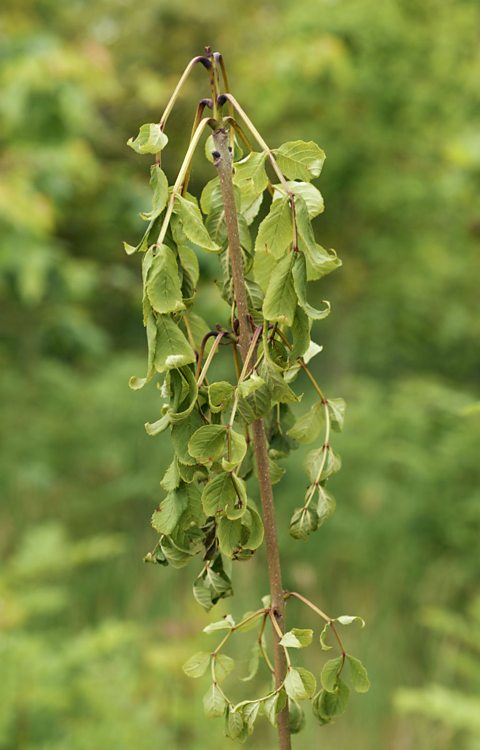Pathogens as causes of plant diseases
A pathogenMicroorganism that causes disease. is an organism that causes a disease. There are four main types of pathogen: virusesUltramicroscopic non-cellular organisms that replicate themselves inside the cells of living hosts., bacteriaSingle-celled microorganisms, some of which are pathogenic in humans, animals and plants. Singular is bacterium., fungiA large group of eukaryotic organisms that contain single-celled yeasts, moulds and mushrooms., and protistA eukaryotic, usually single-celled organism of the kingdom Protista.. All types of pathogen have a simple life cycle. They infect a hostThe organism lived on or in by a parasite., reproduce (or replicate themselves if a virus), spread from their host and then infect other organisms.
Diseases caused by pathogens are called communicable diseaseA disease that is caused by a pathogen and so is transmitted rather than inherited or caused by an environmental factor.. This means they can be caught. The spread of communicable diseases is called transmission The spreading of pathogenic disease, for example by touch, food, water..
Plant pathogens kill or reduce the growth of many plants, which in turn can reduce biodiversityThe range of animals and plants in a given area. . Plant pathogens of food crops are especially serious, such as the Irish potato famine around 1850. A fungus-like species infected the potato crops of Ireland with a disease called potato blight. Potatoes were the main source of food for many people at this time. This disease caused the deaths of approximately one million people.
Chalara ash dieback

A species of fungus called Hymenoscyphus fraxineus infects ash trees. Infected plants suffer the following symptoms:
- leaf loss
- die back of new shoots
- bark lesions
This species of pathogenic fungus is relatively new to the UK. It was first found in 2012. The fungus spreads through the air, so we call it an airborne infection.
Scientists are not yet sure how quickly this fungus will spread or what its full impact will be on our ash population. They are trying to identify the genetic factors that mean that some ash trees are naturally resistant to the fungus.